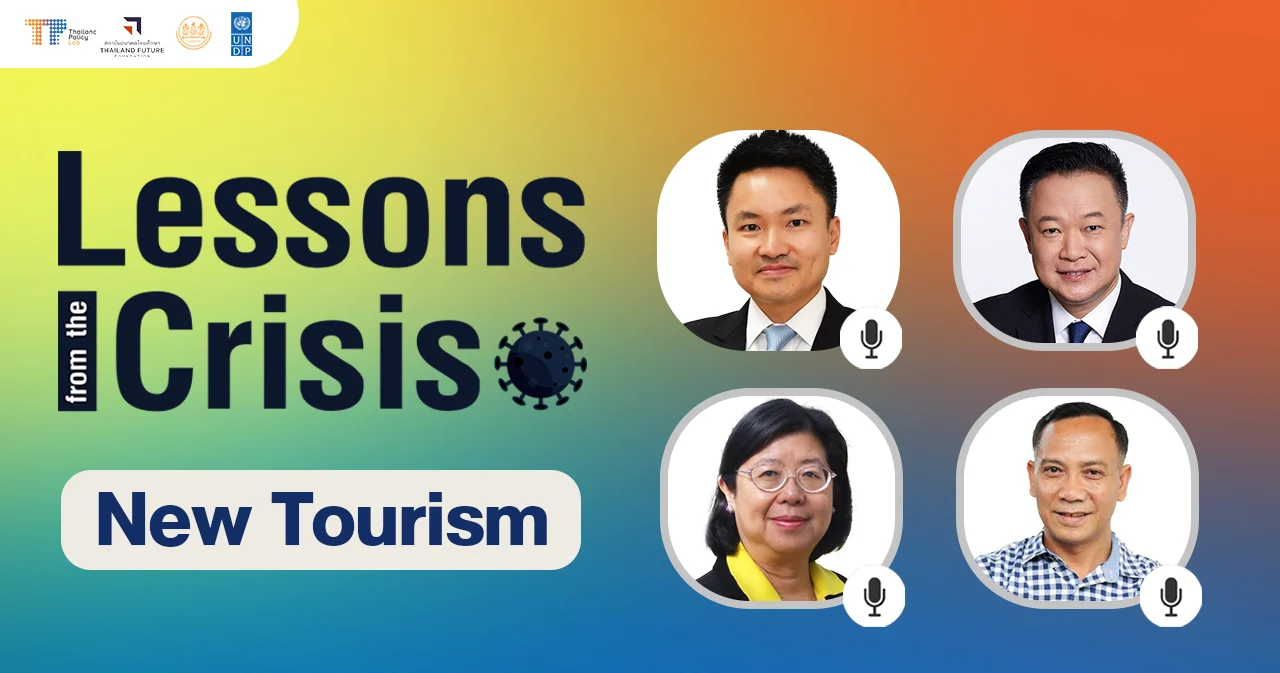-
-
- Thailand has lost so much in these past two years. We lost incalculable income from the tourism industry and the chance to upskill, reskill, and restructure the industry for the better.
- Thailand’s tourism industry will have to rethink and reimagine its stance. The new tourism via the High-5 Strategy will help rebuild the industry to be sustainable and equitable.
-

It has been two years since Covid-19 changed everything around us. People all around the world have to live with the new normal way of life. The sudden changes have left so many behind. The same old solutions do not work any longer. Now it is time to find the way out, together, to not just recover the country post-pandemic but to live with Covid-19 in case it will never go away.
Thailand Policy Lab (founded by UNDP and Office of the National Economics and Social Development Council) together with Thailand Future Foundation hosted ‘Lessons from the Crisis’ Clubhouse Series, inviting stakeholders from every sector, private and public, to exchange ideas and find solutions together.
The first Clubhouse Series was about “New Tourism.” As some may wonder, can Thailand not depend on tourism? What kind of tourism model is apt for the future? In this episode, representatives from three organizations attended: Dr Yuthasak Supasorn the Governor of Tourism Authority of Thailand, Chamnan Srisawat, President of Tourism Council of Thailand, Dr Mingsarn Kaosa-Ard, President of Public Policy Studies Institute Foundation.
This is what we have learned from the two-hour conversation.
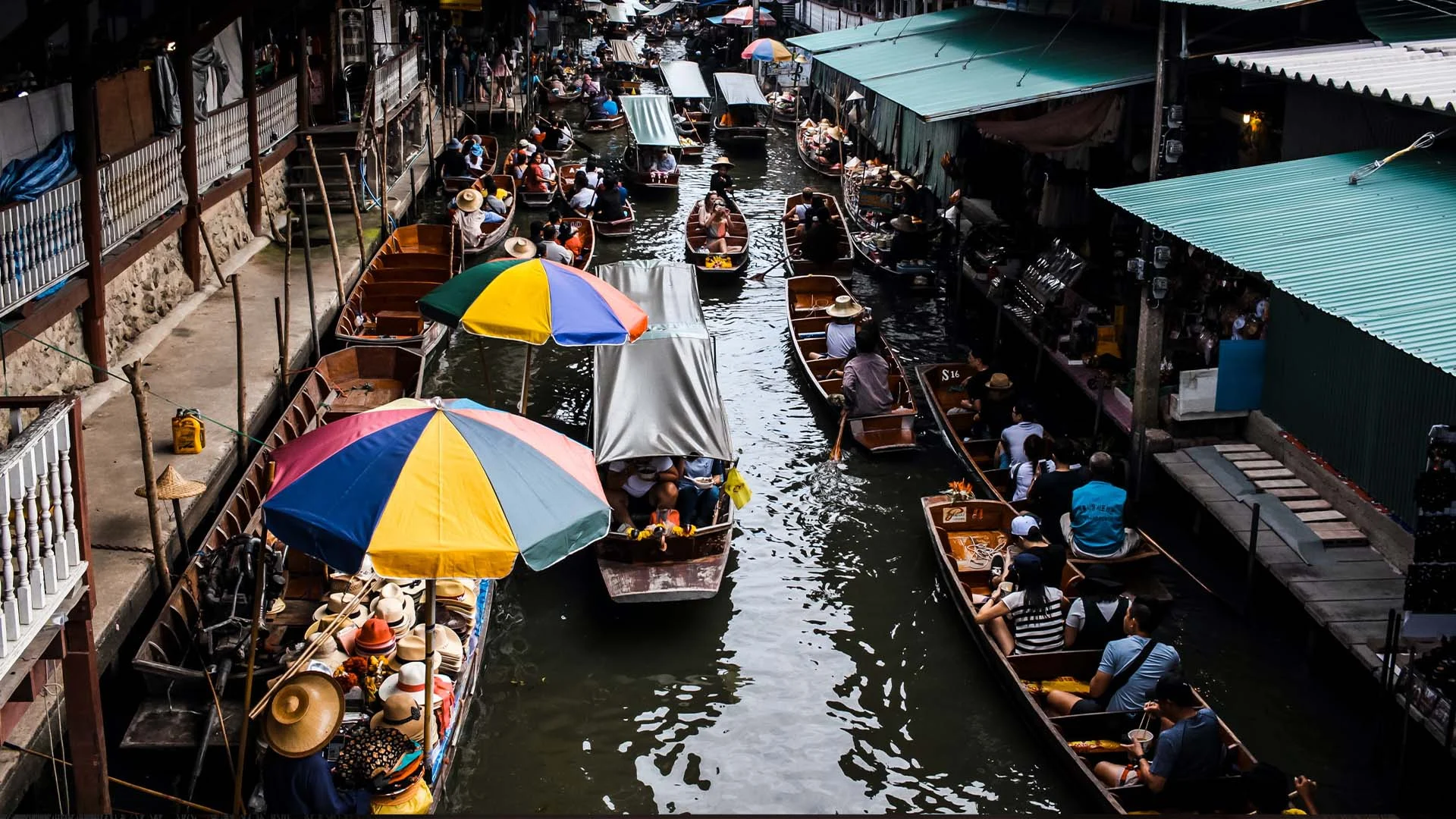
Distribute tourism incomes with “High-5 Strategy”
One-fifth of incomes lost from tourism
Dr Yuthasak started by delineating the importance of tourism income which accounted for one-fifth of the country’s income from the industries. Normally, there would be at least forty million travellers who visit Thailand each year. As if hit by a flash of lightning, the number decreased, to less than one million. With more lockdowns and other Covid-control measures, tourism has been hit directly. This crisis has laid bare everything that has been swept under the rug.
Despite the fact that Thailand’s tourism industry is delightful, in the past few years there was an unequal distribution of resources. Only twenty-two cities in Thailand gain 90% of tourism incomes while the rest share the other 10%
The ‘High-5’ Strategy to recover and distribute national tourism incomes
Dr Yuthasak suggested that from now on Thailand should prioritize quality over quantity of the tourists. Welcoming everyone into the country has resulted in countless problems. To improve the industry, people in the tourism sector must have the will to change even when everything goes back to normal. The future goal of Thailand’s tourism is to be sustainable and high-value. This can be explained with the High-5 Strategy:
-
-
- High-quality: tourists who prioritize experience over price
- High value: improve high-quality products and services
- High impact: support eco-friendly activities, fixes past mistakes and focuses on tourism that maintains a balance economic and environmental aspects
- High skill: adjust to the new normal by retaining skilled workers
- High technology: tourism must fully adjust to the digital age to keep up with the world
-
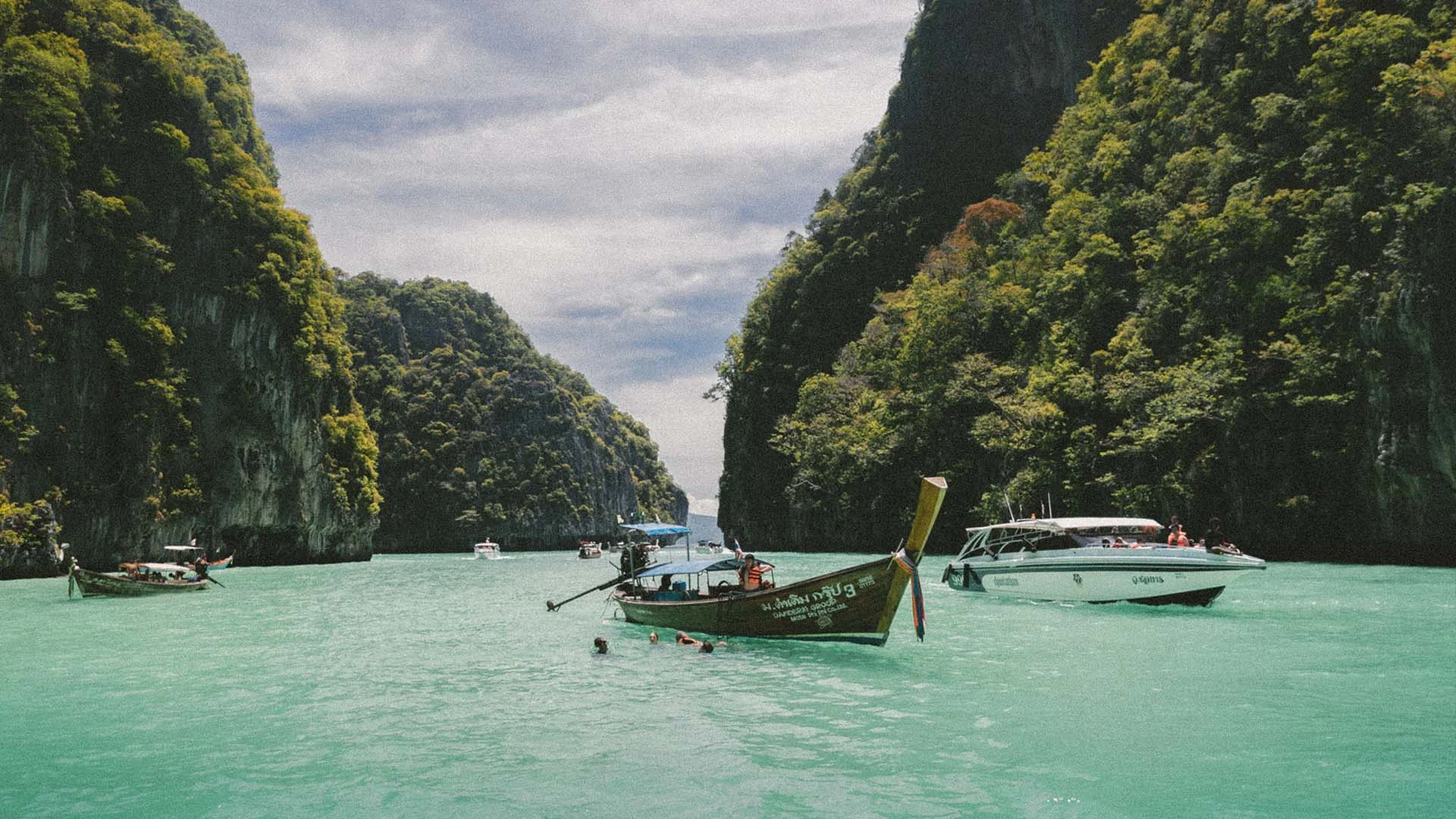
“We have lost two years in which we didn’t train the workers”
Chamnan, a representative from the private sector, saw the crisis as a lesson for everyone to reflect on themselves. The businesses that used to revolve around extracting the highest benefits will now have to rethink, to adjust to the changing tourism industry. As for now, the private sector is drained, it has been almost two years with little to no income, and no end in sight. The crisis affects everyone and the entire supply chain, especially the tourism industry that accounts for more than 20% of the country’s GDP.
People in the tourism industry have long been bone-tired from the poor marketing and lack of efficient platforms. The new solution for Thailand tourism is to attract both local and international tourists with half-half proportion to alleviate economic risks. Thailand needs to accentuate its uniqueness and utilize technology such as a payment system. The tourism industry needs to upskill and reskill the workers to attract high-quality tourists. Livable cities should also be tourist attractions, Thailand can build up from what we have especially when “we have lost two years in which we didn’t train the workers.”
Thailand is competitive in terms of handicrafts but we lose to other nations when it comes to tourist attraction and infrastructure improvement. Phiphi Island, Chamnan’s hometown, was destroyed by the tsunami in 2004 which was a chance to replan the city. Nothing happened. The city plan is now the same without any plan.
New tourism comes with uniqueness
“Thailand’s tourism industry is a demand-push model, we learn about people’s needs and follow suit. But developed countries use the supply-pull model that is to create their own identity and uniqueness and tourists flood to them.”
The aforementioned is part of an article written by Dr Mingsarn about Thailand’s tourism industry. She summarized issues raised by Dr Yuthasak and Chamnan, all three agreed that Thailand needs to depend less on tourists from certain countries and to change our one-time product into an all-time product.
For instance, a tourist may come to ride an elephant once but when they get back to the country, they can adopt a baby elephant via an application and buy its feed regularly. The tourist can name the baby elephant and buy t-shirts with its name screened, ordering them back to their country. Every product is not a one-time service, it can be expanded and improved. Just like when we go to a museum where we buy souvenirs found nowhere else.
From now on, technology will play a more important role, whether you like it or not. In the future, we can collect and organize tourism data and through mass customization, we can segment them in more detail. Tour packages will lose their popularity, tourists will travel by themselves and we can expand the supply chain, transportation, accommodation, restaurants and other services.
Dr Mingsarn added that from now on, tourism will be post-industrial, meaning that workers are more flexible, make and sale will become sense and response, mass tourism will become intensive tourism. The new era tourists will be more decisive and if Thailand learns from this, we can attract these tourists. We attract what we are. With a good environment, we can attract tourists and this will affect both the economy and our social contexts.
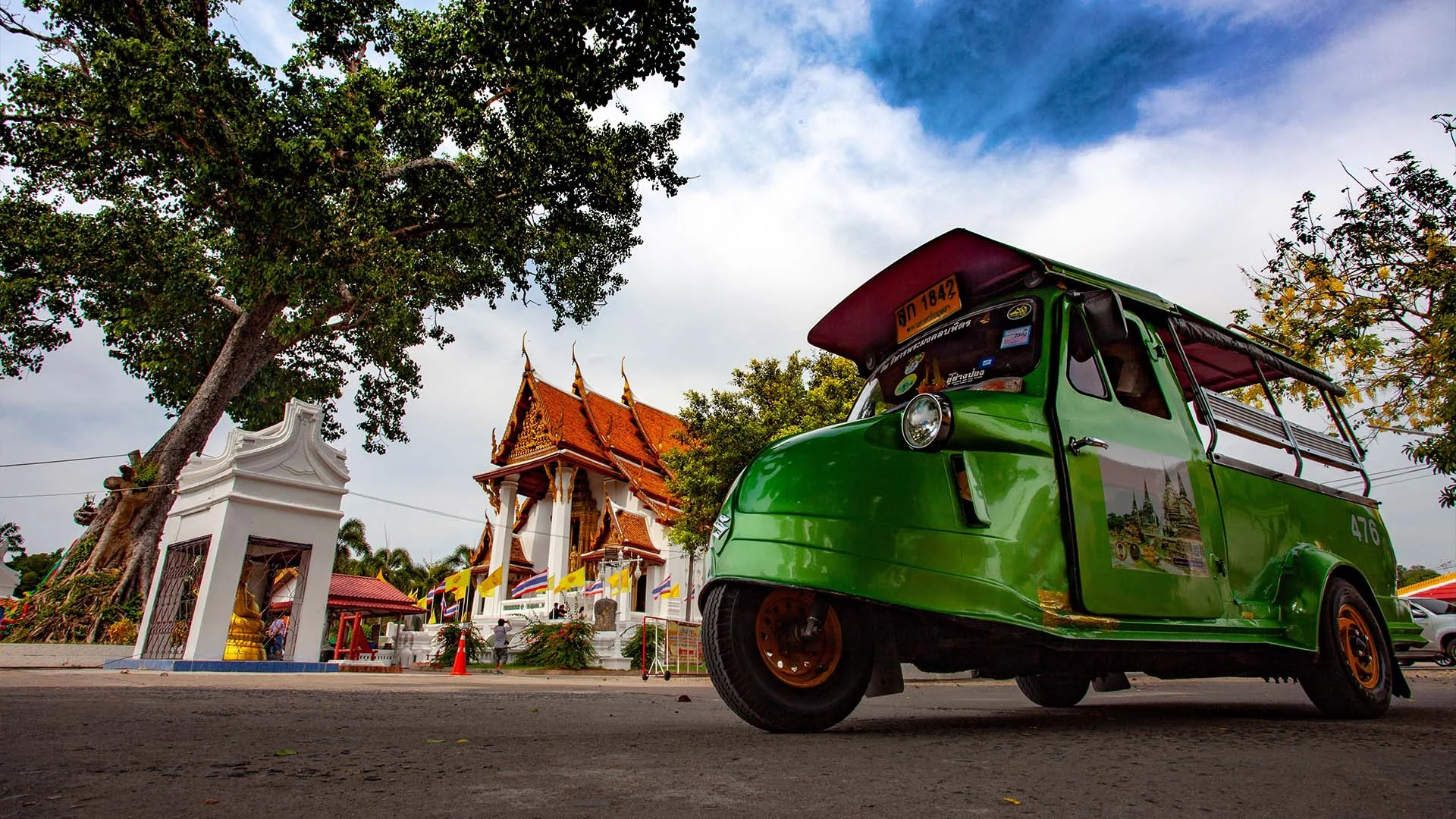
Tourism is a reflection of a country’s quality of life
In the latter half of the talk, the three speakers discuss solutions from their points of view. Chamnan emphasized that now is a good time for everyone to set the same goal that is to look for high-quality tourists or those who care about the environment. He believed that tourism will recover fast, take Betong for example. Just building Aiyerweng Skywalk can be an economic stimulus. Thailand has never had an integrated tourism plan. We want high-quality tourists, but have our workers been upskilled and reskilled? He questioned.
Chamnan mentioned Krabi as a city of balance. It is not as big as Pattaya which is a tourist attraction but is not a livable city. Pattaya needs to be rebuilt but we do not see any coherent policy. If we see examples from other countries, they present themselves in the way that we know what we will experience if we go to this and that city. The government has to create stories for each city, this is not something the private sector can do on its own.
Dr Yuthasak added that everyone knows what to do, but will they? Are we all seeing the same picture? We need to see the upcoming change from both the supply and demand sides. In the past, Thailand embraced every tourist segment, if we want to attract five-star tourists, we need to be that for them. We do not work together now just for the next one or two years, we need to see into the next five to ten years. We need to rank first as a tourism country. We need to find tourists that will create different values and experiences.
The recovery and rebuilding will take cooperation between the public and private sectors. The Tourism Authority of Thailand believes that the private sector is essential but now they are worn out. They need to recover first in order for everyone to go on, in a different but better direction. Walking on the same path is to lose without gaining anything back.
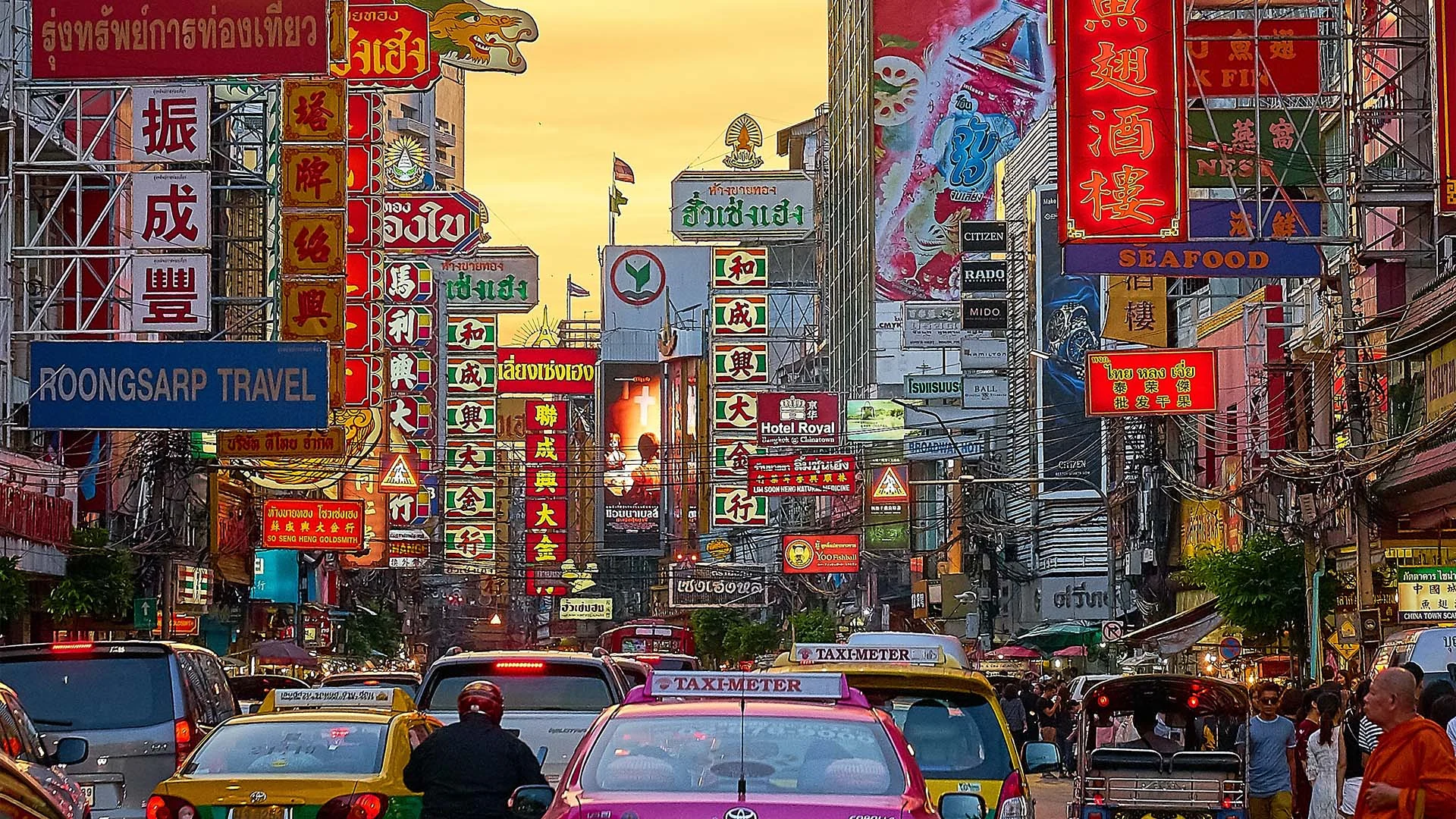
Tourism Clinic to support secondary cities
Chamnan went on and stated that the private sector understands what they need to do and they want changes. To change, academics, experts and politicians need to cooperate. He believed that the pain point now is the fact that people in the industry do not have access to the right economic tools. Chamnan wanted to create a Tourism Clinic to teach tourism and marketing. He believed this is the time to learn about the uniqueness of each city and to move forward, not backward. Everyone in the industry wants to preserve the environment since it is their livelihood.
Dr Mingsarn explained further that the public sector must let the experts do their work. Take, for example, the applications. Some cities have created their own applications but they are hacked and inaccessible. The government must invest in this to meet the users’ demand and to be a one-stop service. About the target, the government should develop the secondary cities to attract tourists, with good accommodation, restrooms, and transportation. Tourism is a system, not just an industry.
“We shouldn’t compete about who is cheaper,” Dr Yuthasak added. Over-supply needs to be managed now to move in the right direction, to blend health with tourism, to support secondary cities to distribute resources, and to build infrastructure to support all that.
Dr Yuthasak proposed ‘3i’ to improve tourism in secondary cities:
-
-
- Digital Industry
- Digital Invest
- Digital Innovation
-
These are the things we must act on now, with clear agencies in charge. If we stay the same, when tourists come back, we will go down the same path.
We should not have lost so much in these past two years without gaining anything back. We can at least learn from the crisis and have more conversations about the road we will take from now on, for the future and sustainability of Thailand’s tourism, for all.

